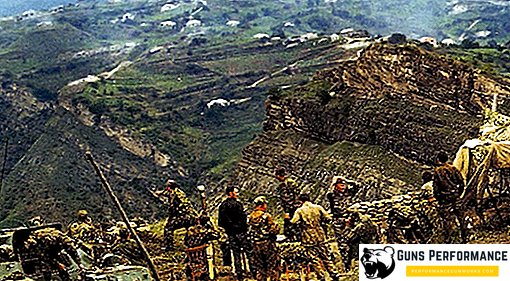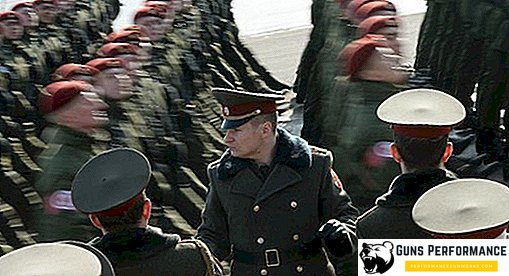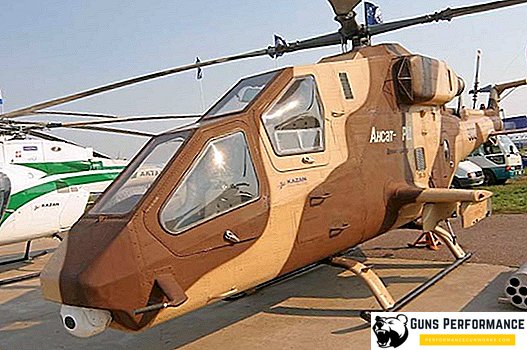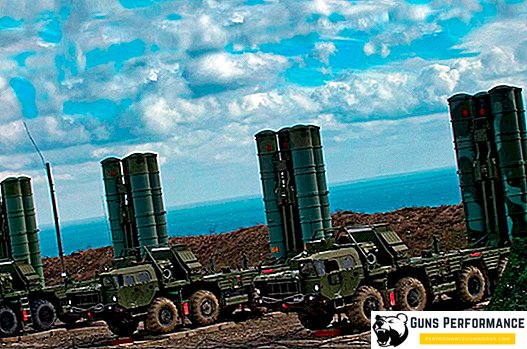The Il-38 is an anti-submarine aircraft developed by the experimental design bureau of S. V. Ilyushin in 1961.

The history of the IL-38
The end of the 50s - the beginning of the 60s of the 20th century is characterized by a new spiral of tension between the USA and the USSR. The main reason for this was the revolution in Cuba, which turned from an actual US satellite into an ally of the USSR. In this regard, the leadership of the Soviet Union was aware of the increased role of the Navy in a possible future conflict, especially submarines. In this connection, the idea was born of creating an anti-submarine aircraft that could minimize the risks from enemy submarines and allow them to clear, for example, an entire area. The result of all these considerations was the decision of the Council of Ministers of the USSR, issued in the summer of 1960, instructing the Ilyushin experimental design bureau to develop an anti-submarine aircraft that could be used in various climatic conditions (both in the North and in tropical climates).
Initially, the Ilyushin Design Bureau was faced with the task of determining the base model for the future anti-submarine aircraft. After considering several options, it was decided to base the Il-18 passenger aircraft. This aircraft had the necessary aerodynamic characteristics, and also had a very suitable layout. In the course of development, it was also decided to abandon defensive weapons, which had previously been obliged to arm anti-submarine and anti-ship aircraft. In the experimental design bureau, this was motivated by the fact that aft turret cannon machine with a mass of 1-1.5 tons significantly increase the take-off weight of the aircraft, which will affect its maneuverability and the required length of the runway.
The new aircraft, which received the name IL-38, was created quickly, and its first prototype was already built by the autumn of 1961. In September of the same year, the first flight of the IL-38 was made. The car showed itself well in the air: it was stable, it was easy to take off and land.
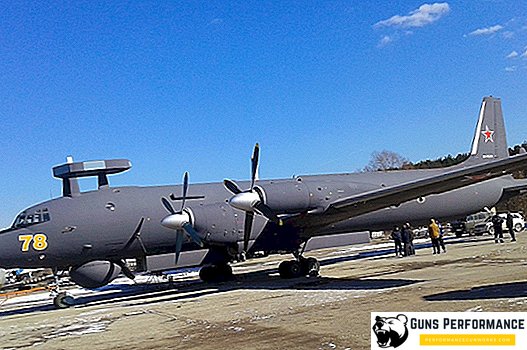
Although the IL-38 borrowed the main elements of the design from the IL-18, but during the development the machine underwent a number of serious changes:
- the wing of the aircraft was moved three meters forward, and the aircraft’s structural filling was significantly changed;
- to increase the maximum range of flight in the fuselage of the IL-38 placed an additional fuel tank;
- in the aircraft fuselage, two special rooms were allocated for torpedoes and bombs, as well as for buoys;
- Many aircraft systems have been radically reworked. This also applies to the internal "stuffing" of the aircraft: a special electronic equipment and onboard systems are installed.
The period of state tests of the IL-38 began in the summer of 1965 and lasted for almost 6 months. After the aircraft withstood these tests, it was adopted by the Navy. Serial production of the IL-38 lasted for five years - from 1967 to 1972. During this period, 65 aircraft were produced, which is about 4 times less than the declared, at that time, need for them.
From the very beginning of the operation of the IL-38, a number of its shortcomings and problems were revealed. Thus, the failure of the search and sighting of the aircraft, as a rule, occurred after approximately two hours of use. The marriage of some elements of the equipment (in particular, radio-hydraulic) also did not contribute to the reliability of the aircraft. As a result, it was concluded that the combat effectiveness of the IL-38 is at a very low level, which is why already in 1969 it was decided to continue working on its improvement.
Initially, for the modernization of the aircraft was planned almost complete replacement of its onboard equipment. For example, it was planned to replace the sighting and search complex "Berkut-38" with a more reliable and accurate "Kite-M", installed on another anti-submarine aircraft - Tu-142M. In addition, it was planned to install a new magnetometer, advanced radio navigation equipment, as well as infrasound buoys, which should have a much greater sensitivity.
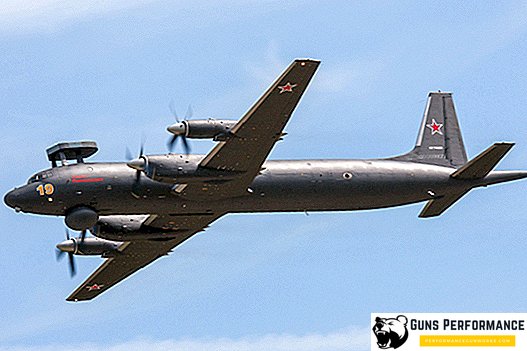
However, the entire plan collapsed due to the complete incompatibility of the Korshun-M complex with the Flame-264 computer system. Thus, it became clear that in order to carry out the entire volume of improvements, a complete replacement of the on-board electronic equipment of the IL-38 is also necessary, which ultimately would lead to work that would have lasted for many years. In the end, only the magnetometer was replaced on the plane.
However, in the 1980s, it was decided to conduct work on the modernization of the IL-38 due to its moral obsolescence. In this regard, especially for the IL-38, the Emerald system was equipped, which was distinguished by greater reliability and stability. As a result, of the total number of aircraft, only 12 were modernized.
Also in the late 80s, work began on a modern anti-submarine complex "Novella", the installation of which was supposed to be on the IL-38. However, after the collapse of the Soviet Union, due to the difficult economic situation, the Novella complex turned out to be useless in Russia. However, it aroused interest in India, where six IL-38 anti-submarine aircraft, designated SD - Sea Dragon, were equipped with the new complex. Only in the 2010s, this complex was used in Russia. In total, as of the end of November 2018, the Novelloy was equipped with seven IL-38s that are part of the Russian Navy.
Overview of the aircraft and its performance
IL-38 is an all-metal nizkoplan normal aerodynamic configuration. The plumage of the IL-38 - single-fin. Chassis - tricycle.
Also, the IL-38 is equipped with two compartments for locating means of detecting and destroying enemy submarines. Under the cockpit there is a radome antenna (radar) of the Berkut-38 complex. The aft part of the aircraft, located behind the tail, is somewhat lengthened due to the location in it of the fairing of the magnetometer sensor. The IL-38 has four AI-20M turboprop engines. It is also worth noting that the on-board computer was installed on the IL-38 for the first time in the USSR (“Flame-264”).

Flight specifications of IL-38:
- Crew, pers. - 7
- Length, m - 40
- Wingspan, m - 37.4
- Height, m - 10.1
- Wing area, m² - 140
- Average aerodynamic chord, m - 3
- Track chassis, m - 9
- Empty weight, kg - 34 700
- Maximum take-off weight, kg - 68 000
- Maximum landing weight, kg - 52 200
- The mass of fuel in the internal tanks, kg - 26 650
- Powerplant - 4 × AID-20M
- Engine power - 4 × 4250 l. with. (4 × 3126 kW (take-off))
- Air screw - AB-64 series 04A
- Screw diameter, m - 4.5
- Engine weight, kg - 1040
- Flight performance:
- Maximum speed, km / h - 650 at an altitude of 6000 m
- Fighting radius, km - 2200
- Technical range, km - 9500
- Practical ceiling, m - 8000 m (with a flight mass of 66,000 kg)
- Takeoff run, m - 1700
- Run length, m - 1070
- Armament:
- Combat load:
- Normal, kg - 5430
- maximum kg - 8400
- Bombs: anti-submarine:
- free falling: PLAB-250-120, PLAB-50
- Adjustable: PL250-120 "Corral"
- Torpedoes: AT-1, AT-2, AT-3 (UMGT-1), APR-1, APR-2
- Hydroacoustic buoys: RGB-1, RGB-2 and RGB-3
- Sea Mines: AMD-2
Modifications IL-38
In the entire history of the development and use of the IL-38, three modifications were created:
- The Il-38 is the basic model of the aircraft, equipped with the Flame-264 on-board computer system and the Berkut-38 search and sight system.
- IL-38SD - a modification of the IL-38, equipped with the sighting and search complex "Novella" and a more advanced on-board computing system. It is in service with the Indian Navy.
- The Il-38N is a model of the aircraft that is almost the same as the Il-38SD, which is part of the Russian Navy.
The advantages and disadvantages of IL-38
Before starting a general description of the advantages and disadvantages of the IL-38 aircraft, it should be noted that it was developed on the basis of the IL-18 passenger aircraft. Thus, the IL-38 "borrowed" the main aerodynamic features of its "older brother", including its positive and negative sides.
The aerodynamic characteristics of the IL-38 are quite good, which allowed it to become a very mobile anti-submarine aircraft. In many ways, this was also achieved due to the small mass of the aircraft, as well as due to the abandonment of defensive weapons. The high reliability of the IL-38 was due to the fact that the aircraft was originally planned for the northern waters, so it was tested in a variety of climatic conditions.
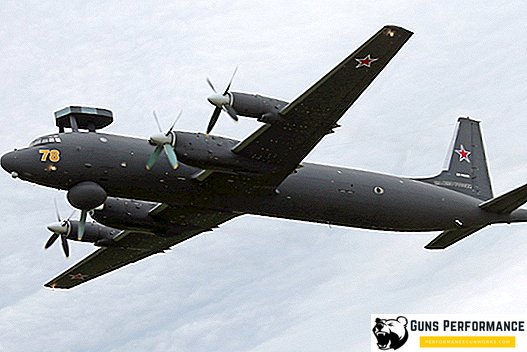
However, for the first IL-38 planes, there was a main drawback, which essentially nullified their anti-submarine purpose — the equipment was distinguished by its imperfection. So, the plane could fly only 1.5 hours before the search and aiming complex failed. To fight such a plane could not.
All decided to upgrade the IL-38 in the late 80s - early 90s. However, due to the fact that the plane by this time is obsolete, it can not be called a good machine. Ultimately, the IL-38 was not able to solve all the needs of the fleet in a powerful anti-submarine aircraft.
Conclusion
Currently IL-38 is in service with the Russian Navy. However, since it was developed at the beginning of the 60s, the obsolescence of the aircraft gradually takes its toll. In this regard, it is appropriate to conclude that soon (within 10-15 years) the anti-aircraft Il-38 will be replaced by other, more modern models.





